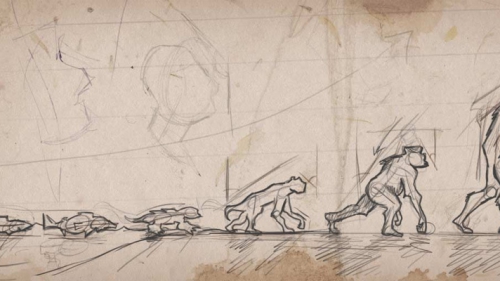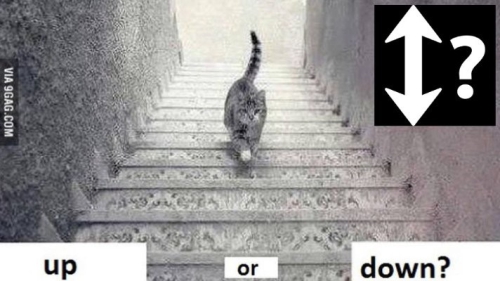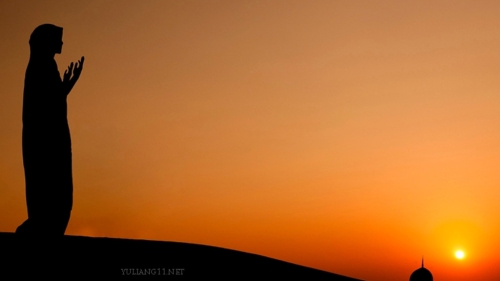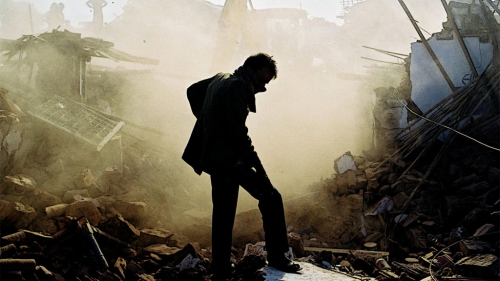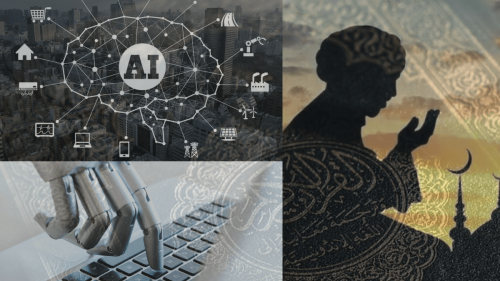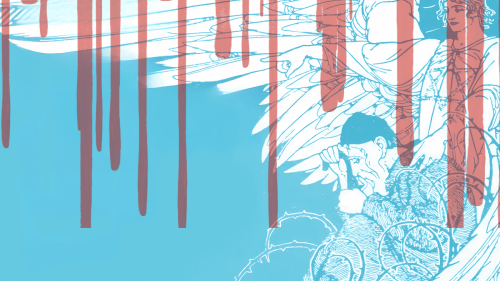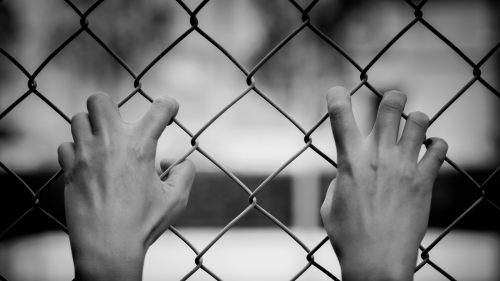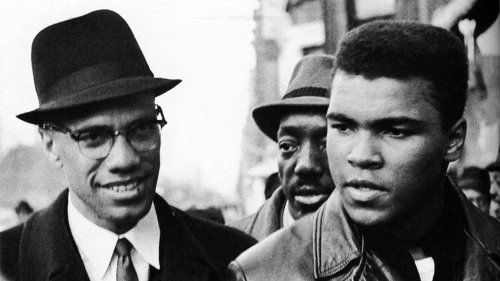Hamas - A History From Within
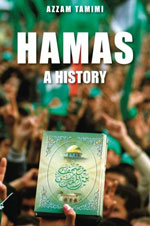 |
Most of the world knows the superficial history of Hamas as presented by western media, the stories of the suicide bombers, the election results that were argued to be a vote against the PLO/Fatah but not for Hamas, the resulting denial of that democratic vote by all western governments, and most recently, the Hamas takeover of the dysfunctional governance of the Gaza Strip. Azzam Tamimi's book, Hamas -A History From Within, presents a much broader and much more accurate perspective on a group that has had much more significance for the Palestinian people than simply being a militant suicidal terrorist group.
Consistent with the title, Tamimi presents a history that shows Hamas' development from its roots within the Muslim Brotherhood, from its aspects of international cooperation and denial, and from within' -the development of the ideas, policies, and implementation of ideas that is rarely seen in western media sources. It is not a fawning sycophantic review, as it also reveals the internal struggles within Hamas between the various people and political institutions involved in its history and development, and further reveals the precarious hold it had on survival, a survival that became ensured only with the advent of more serious Israeli atrocities during the first Intifada.
Arguments have been made that Hamas was assisted in its set-up by Israel in order to counter the power of the PLO/Fatah organization. Tamimi is much more nuanced in his discussion of this, arguing more that Israeli ignorance of what Hamas embodied and what it meant to the mostly poorer and refugee Palestinians allowed it to survive without direct complicity. Beginning with Sheikh Yassin in Gaza, and as a reaction to the defeat of pan-Arabic Nasirism after the 1967 war, the Islamic Brotherhood centered their concerns not on militancy, but "primarily on instilling Islamic values and ethics in the hearts and minds of the young. "At that time, Israel did not support the Islamic Brotherhood (Ikhwan) but the "occupation authorities did not object to this seemingly benign religious activity."
Tamimi argues, "At this time, the Palestinian Ikhwan...were concerned principally with the education and training of their members and supporters so as to shield them from what they deemed to be alien and hostile ideologies and sociopolitical trends ...[rescuing] the individual, the family, and the community as a whole from the onslaught of Western ideas, whether liberal or Marxist. "An Islamic education and revival of Islamic society, and not militant terrorism, were the initial forces behind Ikhwan activities.
Following from that, and with full evidence over the years, the Ikhwan, focused mainly on students and young people, focused on providing social, recreational, and educational services. Again, "The Israelis did not see this association [the Islamic Society] as any kind of threat, and granted the Ikhwan a license for its establishment. "The activities of the society "included sports, recreational trips, scouting activities, and public lectures on religious and social issues."
There is certainly room to spin these developments into that of Israeli subterfuge against the PLO, and more than likely within the broad spectrum of opinion that is usual in all possible political motivations that view could arise within some individuals, but Tamimi's overall historical development indicates, as above, that Israel simply saw it as no threat to themselves at that time. Likewise, within the Ikhwan, would be individuals that were more militantly oriented than others, but the fundamental appears solid and well argued, that education and social services were the primary goal of the original Ikhwan set-up.
This led to the development of mosques, schools, kindergartens, universities, day-care, medical clinics, hospitals, and other social organizations. These organizations obviously greatly benefited the poor and the refugees within the West Bank and Gaza; in contrast, the PLO/Fatah, as evidenced in this work and other recent histories, became more concerned about supporting their own internal structures and maintaining their power and predominance politically and economically over the Palestinian territories.
As history from within' Tamimi concentrates most of his presentation on the personalities and politicians that influenced the development of the Ikhwan into what became known as Hamas. Sheikh Ahmad Yassin was the foremost among them, a spiritual and moral leader who oversaw the major developments of the group, and who served as spiritual leader in absentia during his many years in Israeli prisons. Other less familiar names play major roles in the many developments both for and against Hamas, Khalid Mishal, Abu Marzuq, Samih al-Battikhi, Ibrahim Ghosheh, Isma'il Haniyah, Jordan's King Abdullah, and many others illustrate the political turmoil that Hamas experienced over the years.
The international role played within' Hamas is also reviewed, with its on and off relationship with what I could only label as the conspiratorial monarchy of Jordan significantly displayed. Hamas' relationships with other Arab states, many of which appeared self-serving for the Arab states, is well outlined, with the ultimate support coming with the release of Sheikh Yassin in 1997 after the disastrous (for the Jordanians) botched Mishal assassination attempt. Yassin's Arabic tour the next year demonstrated high level political support from his Arab neighbours (except those overly influenced by his political rival Arafat) as well as the continuing strong support from the Arab populations. This support came from "the movement's steadfastness in recent years in the face of an American-led global campaign against it. In the face of would-be crushing blows, Hamas had refused to modify its stance in the slightest towards compliance."
In Palestine, Hamas leaders were noted for "ascetism, altruism, dedication, and honesty, "for living with and among the people as they always had, as "no one joins Hamas to make money or has become rich by virtue of their position within it....Finally, donors were aware that only a small fraction of the money raised by Hamas would be used for military purposes."
This stands in contrast to the PLO/Fatah activities. The internal relationship of Hamas with the PLO/Fatah becomes more intense as events progress, the comparison between the two also drawing significant support towards Hamas. Tamimi, as with other recent Palestinian histories [1] is quite direct in his criticism of the PLO/Fatah who dominated the Palestinian Authority whose "officials were seen to be paid unreasonably high sums "as well as being employed "in the expanding security services, whose task was to control the occupied Palestinians on behalf of Israel. "This "vast bureaucracy...secured the loyalty of its employees....and served to increase the disparity of economic means between Palestinians. "Fatah suffered from "a plague of rampant corruption "and was "wracked by corrosive rivalries that sickened many Palestinians."
The transition from being a section of the Islamic Brotherhood, the Ikhwan, into Hamas began before the start of the first Intifada. Internal discussion had taken place about armed resistance, with the Ikhwan maintaining that building the Islamic individual and community were paramount. From these discussions developed the movement towards protest actions, and a more militant viewpoint that found expression with the Intifada, dated as of December 8, 1987. The Intifada "was a gift from heaven" for Hamas, with the PLO and Israel being caught off guard. The Israelis misjudged it in two aspects: that it was "Merely an expression of anger that would abate in a day or two; "and they "were not sure who was orchestrating the unrest."
The results of the Intifada were counterproductive for Israel as they "were oblivious to the fact the whenever they hit Hamas, and no matter how hard they hit it, they only earned it further popular sympathy and support. "With the PLO leaders at this time still encamped in Tunis, it was these actions that Tamimi credits "to the emergence of Hamas as a credible alternative to the PLO. "Through all this the Hamas military wing developed, the al-Qassam Brigades, "a product of the intifada itself. "With their organization involving an inside' and outside' leadership, and the recognition that Israel would try to decapitate that leadership, "Hamas...seemed to make gains out of its losses."
From that time, Hamas history became public, with the western media emphasizing the Islamic militancy of the al-Qassam Brigade above the overall Hamas political set-up. From that, as is well known, Hamas has been declared a terrorist organization by many countries even though it is much more similar to all other insurgencies worldwide against foreign occupation. [2] Eventually, through all the intervening activities, Tamimi summarizes, "From Israel's unconditional and unilateral withdrawal from Lebanon to its unconditional and unilateral withdrawal from Gaza, it was Hamas that reaped the benefits and emerged victorious despite the losses. The failure of peace negotiations, whether the Oslo Accords, the road map, or Sharon's disengagement policy, seemed in the eyes of many Palestinians to vindicate Hamas's approach."
History then takes the story in a new direction as Hamas buys into the political process. This part of the story is much better known to the west, albeit similarly biased in its presentation of Hamas as a terrorist group. Although winning a clear majority of the Palestinian legislative seats, an accomplishment that Tamimi sees not as a vote against the PLO as "in reality, only a fraction of the votes cast was made up of protest votes, "the election was universally disallowed and has resulted in ongoing internal division within the Palestinian territories, with now PLO leader Abbas being the current Israeli/American "man of peace "while being derided alternately as another PLO pawn in their hands. The PLO, Israel, America and the west in general have done as much as possible to discredit and destroy the Hamas political success.
While discussing these recent events, Tamimi also discusses more of the philosophical underpinnings of the Hamas movement and the discussion that takes place within Hamas itself concerning its goals and means. The Hamas charter "reads more like an internal circular" and there is ongoing discussion about writing a new charter. In Appendix II, Tamimi presents a memo prepared by the Hamas Political Bureau in 2000 that is a much more nuanced document, and it still calls for -naturally - the liberation of Palestine, and supports its right to military resistance (as a right determined under international law as well).
In the chapter "The Liberation Ideology of Hamas "Tamimi develops these internal discussion as well as adding more definition to other ideas presented in passing in western media. The idea of hudna' or truce receives strong coverage (including previous statements that only Hamas had ever initiated and maintained a unilateral truce during the various conflicts), as well as tahdi'ah' or calming, a temporary hudna'. The result of these truces however was that "Israel's refusal to reciprocate led many Palestinians to lose confidence in the usefulness of declaring a unilateral truce. "The concept of suicide and suicide bombing within the Islamic context as well as within western perception is discussed, along with the related Islamic discussions of jihad and its subordinate positions of qital' and martyrdom.
For those in the west who truly want to understand Hamas, Hamas -A History From Within should be required reading (along with those mentioned in the footnotes). It is clearly written, presents well structured arguments and while it is a history, it is much more than dates, names, and events, but a running discussion of the changes in ideas and organizational structures within Hamas. Although the Israelis and Americans use their own "terrorist theology" to denounce Hamas the reality as seen by the Palestinians is one of colonial occupation and subjugation with the intent, ultimately, of Israeli hegemony over the Palestinian territories as well as the greater Middle East, supported in full by American commercial/military interests. Azzam Tamimi has presented a highly informative work, one that provides a significant new perspective for the west on what is occurring in Palestine and the Middle East.
[1] see in particular Between the Lines, by Honig-Parnass and Haddad, Haymarket Books, 2007, and The Palestinian Hamas by Mishal and Sela, Columbia University Press, 2006. While they all direct criticism at the PLO/Fatah, they also recognize the contributions made towards recognition of the Palestinian situation internationally and the powerful unifying symbolism of Arafat, particularly when he defied Israel at the end of his time in Ramallah.
[2] Nor did Hamas originate suicide bombings of civilians. Yes, that is terror, but it is also an asymmetrical' response to massive oppression endured under occupation and the terror that devolves from Israeli and American military actions against Palestinian civilians. For a reasoned discussion on suicide bombing, see Dying To Win, by Robert Pape, Random House, 2005.
Jim Miles is a Canadian educator and a regular contributor/columnist of opinion pieces and book reviews to Palestine Chronicles. His interest in this topic stems originally from an environmental perspective, which encompasses the militarization and economic subjugation of the global community and its commodification by corporate governance and by the American government.


















